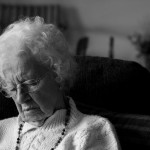Below is the first article OnTheWight has published as part of the new data collaboration with Urbs Media and Press Association.
Data reporter, Ralph Blackburn, shares this article following publication of the social mobility index as covered by OnTheWight last week. Ed
Fewer than one in seven children on free school meals in the Isle of Wight go on to higher education, new research has found.
The Social Mobility Commission’s study revealed that just 14% of youngsters from disadvantaged backgrounds from the local authority go on to university or other higher education.
This is compared with 53% in Westminster, the highest proportion in England.
Huge variation in life chances
The government watchdog’s latest report into inequality in Britain highlights the huge variation in life chances for youngsters from disadvantaged backgrounds depending on where they grow up.
The commission assessed the development of children across the country from nursery right up to university, ranking each of England’s 324 local authorities for social mobility.
It defines pupils on free school meals as those from disadvantaged backgrounds.
The Isle of Wight came number 235, with the top ten places going to London boroughs.
From early years to post-16
The study found that 53% of five-year-olds eligible for free school meals achieve “a good level of development” by the time they are ready to start primary school.
And only 39% of those pupils go on to achieve the expected level in reading, writing and maths by age 11. Of those youngsters, 22% go to a secondary school with a good or outstanding Ofsted rating, significantly below the England average of 73%.
Out of the pupils from deprived backgrounds who finished school at 18, just 26% achieved two or more A-levels, or equivalent qualifications.
At least one in every ten children who was eligible for free school meals is not in education, employment or training by the age of 17.
Rural and coastal areas suffering
The report found that the worst performing areas for social mobility are no longer inner city areas, but remote rural and coastal areas, and former industrial areas.
Young people from disadvantaged backgrounds living in these areas face far higher barriers than young people growing up in cities and their surrounding areas.
Image: alexisnyalphotography under CC BY 2.0





